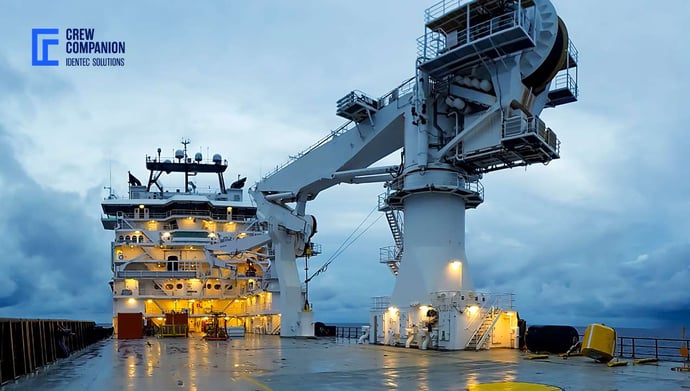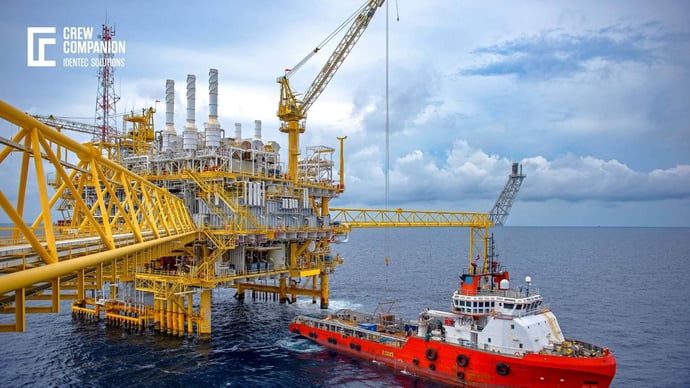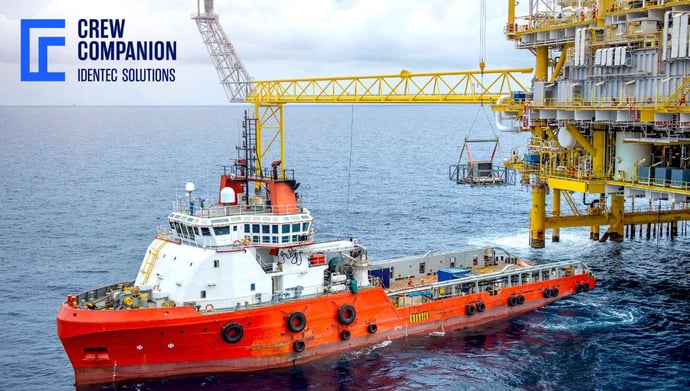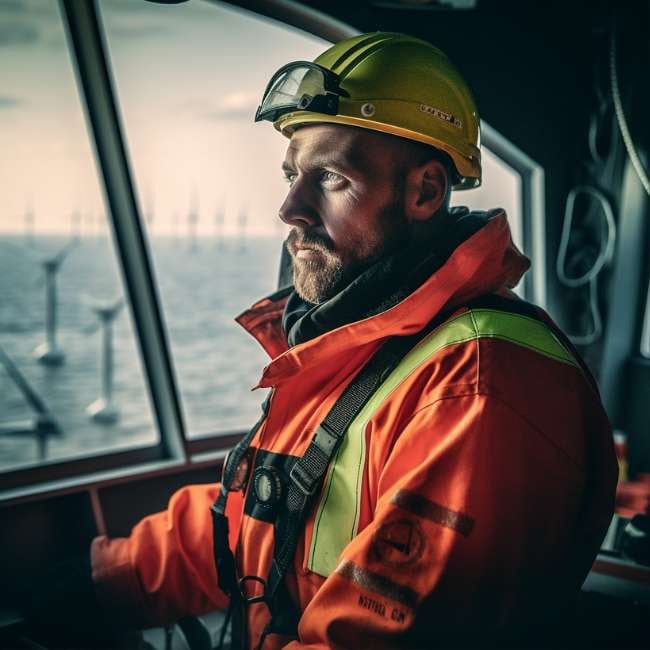Walk-To-Work Offshore 101
| Written by Michal Wozniakowski-Zehenter
So, what’s the big deal with Walk-to-Work? Picture specialized vessels, almost like those out of sci-fi stories, fitted with unique gangways and systems that balance themselves against the whims of the waves. This allows folks onboard to simply... well, walk to their work on the offshore installation. No more dizzying helicopter rides or shaky boat transfers. It’s just a straight, safer walk. Plus, these systems aren't just about people; they’re perfect for moving equipment and supplies, ensuring everything needed is right where it should be.
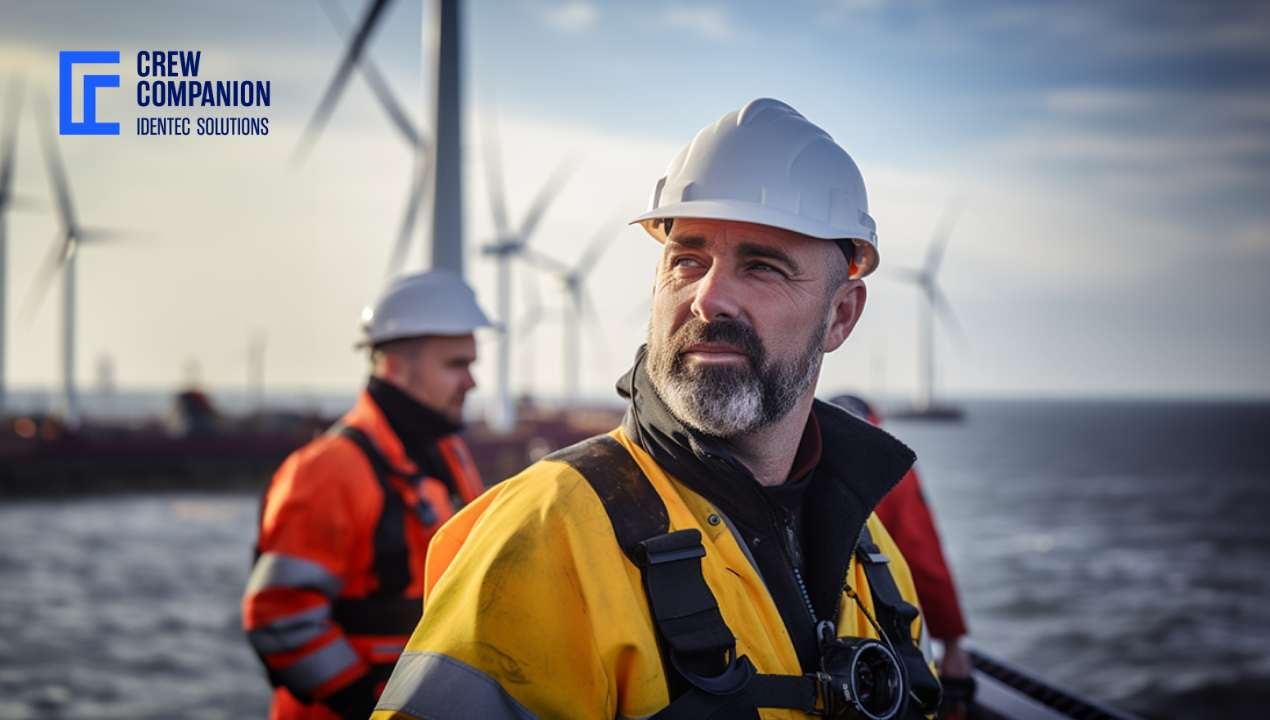
No video selected
Select a video type in the sidebar.
STEP BY STEP
In the vast expanse of our oceans, amidst the powerful gusts and unpredictable waves, there has always been a touch of romance and a hint of danger. Now, imagine the journey to these energy havens. It used to be something straight out of an adventure novel – sometimes thrilling, often perilous. But times have changed and how! The Walk-to-Work revolution has swept across the offshore landscape like a breath of fresh air. Crew transfers? The unpredictable, sometimes heart-stopping helicopter rides, or the swinging baskets - reminiscent of age-old sea tales - are becoming tales of the past.
Enter the marvels of modern engineering: motion-compensated gangways. I'm talking about these sleek, extendable pathways that seem to magically bridge the moving ship and the offshore platform. It's as if nature and technology decided to waltz together. Just think about the last time you boarded a flight, walking effortlessly through the jet bridge. That's the kind of finesse crew members are experiencing now. But this isn’t just about the glitz and glam. The Walk-to-Work approach is redefining safety, efficiency, and downright professionalism. The days of nail-biting, edge-of-the-seat transfers? They're fading away. Now, crew members stride with newfound confidence, knowing each step is backed by world-class technology.
In essence, Walk-to-Work isn't just a process; it's a promise. A promise of safety, a nod to efficiency, and a tip of the hat to innovation. Offshore adventurers, while they ride the waves of energy exploration, can now do so knowing that their journey to work is as refined as it gets.
Walk-to-Work offshore: Vessels, gangways, facilities & systems
Walk-to-Work vessels aren't just boats; they're marvels of marine engineering. A key feature is their Dynamic Positioning System (DPS), which, through tech wizardry, uses sensors and smart algorithms to keep the vessel steady, even when Mother Nature tries to throw it off course.
The offshore world is no picnic, so these vessels come prepped for anything. Think top-notch safety gear, evacuation systems, lifeboats, and high-end communication tools – because when things get dicey, a clear line of communication can make all the difference. Now, the gangway – it's the magic bridge connecting the ship to the platform. As the sea dances, the gangway, equipped with real-time tech, adjusts to ensure workers can move safely and efficiently. Made of durable materials that laugh in the face of salt and sea, it's built with the safety of personnel in mind, adjusting itself to easily fit various offshore platforms.
But it's not all work. The living quarters on these vessels? They'd give some luxury hotels a run for their money. Imagine private rooms, entertainment areas, and dining spaces all set up to make sure the crew feels right at home. To stay fit and healthy, modern gym facilities and med bays are ready to tackle any health concerns. And let's not forget about staying connected – with advanced communication tools; crew members can easily chat with loved ones or collaborate with their onshore counterparts.
Beyond all this, Walk-to-Work vessels are jacks of all trades. They come with cranes and storage spaces, making them perfect for moving both people and supplies. They've got zones dedicated to tool maintenance, ensuring every gadget is in tip-top shape. And when it comes to security and navigation, they're fitted with the latest radar, sonar, and surveillance systems.
Facing ChallengeS for offshore Walk-to-Work
Weather out at sea is like a box of chocolates; you never know what you're gonna get. The raging winds, torrential rains, and monstrous waves are not only a sailor's nightmare but also a real pain for the Walk-to-Work systems. How do you make sure these systems work safely, even when the ocean's throwing a tantrum?
Then there's the issue of the platforms themselves. Imagine trying to make a one-size-fits-all solution for every phone out there – tricky, right? It's the same with offshore platforms. Making the Walk-to-Work systems jive with each one is no walk in the park; it's a whole engineering puzzle.
Tech is moving at the speed of light these days. While that's great for our Netflix streams, it's a challenge for systems like Walk-to-Work. They rely on some pretty high-tech stuff, like those fancy gangways that adjust to the ship's movements. Keeping everything up-to-date and making sure we're not using yesterday's tech today is a task and a half. But staying ahead of the curve will keep things running smoothly and avoid any "oops, we're outdated" moments.
Let's talk money. Setting up these systems isn't pocket change. Yes, they'll save time, reduce risks, and make things more efficient in the long run, but convincing the bigwigs to open their wallets? The key is showing them that what goes out now will come back tenfold later.
Lastly, trust is a biggie. We've got to get everyone on board – from the guys working on the platforms to the managers crunching numbers back on land. If they're unconvinced about the system's safety and benefits, it's back to the drawing board. Clearing up doubts, offering training, and showing real results will turn the sceptics into believers.

But, what for?
Navigating the vast blue, the Walk-to-Work system is like the Swiss Army knife for the offshore renewable energy world. Think of wind farms or those wave and tidal energy setups – this bad boy makes reaching them a breeze, boosting how we tap into and maintain these green energy giants.
Beyond just energy, the system is like a magic carpet for marine researchers and eco-warriors. W2W takes them where they need to go, unlocking new horizons in understanding and protecting our watery realms.
Now, when things go south offshore, like accidents or mishaps, the Walk-to-Work becomes the superhero everyone calls. Ready to swoop in, it's quick on its feet (or should I say, on its waves?), making sure help reaches where it's needed, pronto. Whether it's a rescue mission or cleaning up a mess, this system ensures we're not caught off guard.
Even the big guns – the Navy and defense guys – have given the Walk-to-Work system a nod. Setting up bases in far-flung areas or running drills to keep their game sharp, the Walk-to-Work system plays a key role, ensuring things run like clockwork.
Let's not forget about our bridges, ports, and all those offshore structures that keep our world connected. Whether building them, checking them for wear and tear, or just giving them a little TLC, the system is right there, making sure everything's shipshape. Plus, with goods zooming in and out of ports, having the Walk-to-Work around is like having an extra pair of hands, keeping things moving smoothly.
Walk-to-Work Offshore: Bridges of the future
The offshore world is buzzing, and the Walk-to-Work system is at the heart of it. They're not just today's hot topic; they're shaping the offshore tomorrow. Imagine a smart gangway, a product of AI and robotics, which not only dances with the waves but can dock itself. Kind of like a self-parking car, but for the seas. Throw in some IoT magic, and these gangways might tell us when they're feeling under the weather, giving a heads-up before anything goes south.
Got an emergency? Future W2W systems might have a quick escape button, letting vessels make a swift exit from platforms if things get hairy. Before our crew even steps on these systems, they could be prepping with virtual reality, going through drills that feel as real as the ocean's salt on their skin.
The green wave is unstoppable. So, it's not far-fetched to think of Walk-to-Work vessels riding that wave, perhaps running on green fuels or even whispering through the waters with electric engines. And for our underwater buddies, these vessels might move so silently they'd be the ninjas of the ocean.
Speaking of dreaming, how about an upgrade in crew comfort? Climate-controlled gangways, cushioned rest spots, and digital dashboards spill the beans on everything from weather updates to a virtual sneak peek of where they're headed.
And as W2W becomes the norm, we could see a global rulebook emerge, a standard that says, "Here's how you do Walk-to-Work right." With governments, industry bigwigs, and innovators all brainstorming together, who knows how far this wave will take us? The future's looking exciting, and Walk-to-Work has got a front-row seat.
Preparing the Offshore Workforce
In fact, as the offshore industry embraces the Walk-to-Work revolution, ensuring that people working on the facilities are appropriately trained to take advantage of such advanced systems is becoming crucial. The seamless transition from vessel to platform and back again requires high-tech equipment and a highly trained workforce. Companies are starting to develop extensive training programs to strengthen confidence and safety while operating among the crew, which all add up to operational efficiency.
Modern techniques of training for W2W operations include advanced VR and AR. These innovative, interactive tools allow realistic simulations where crew members can practice various scenarios-from routine transfers to the emergence of an emergency situation-without necessarily having to set foot on deck. In using VR training, workers can develop hands-on experience in tending to motion-compensated gangways, reacting to sudden changes in weather, and carrying out safety protocols. This training can help reduce stress for newly appointed crew members and enhance preparedness, making real-life operations easier and safer. In addition to VR, state-of-the-art onshore training facilities can now simulate the motions of a W2W vessel, bringing participants an appreciation for how dynamic positioning systems and motion-compensated gangways work under various sea states and creating a practical knowledge base for their future job assignments.
Safety is at the core of every W2W operation, and that is reflected in its training programs. Safety drills, evacuation procedures, and equipment handling encompass a vast part of workshops and courses, thus underlining the proactive identification and mitigation of possible hazards. Not only does it teach the personnel to handle equipment, but working under pressure will ensure seamless communication and, hence, team cohesion and rapid response capabilities. Besides, ongoing training and certification programs are being integrated to cope with technological advancement. With continuous development in W2W systems using AI-driven diagnostics, automation, and new safety features, training for offshore crews must also be continually updated for them to be able to maximize these innovations. Investment in advanced training strategies underlines that the industry is committed to a future where Walk-to-Work will be a system and a standard of safety and efficiency in offshore operations. In so doing, the sector is developing a workforce that will be ready for tomorrow to confidently stride into its roles with the skills and knowledge to face whatever challenges the deep blue may pose.
FAQs
What is Walk-to-Work Vessel?
Enter the specialized vessels tailored for this exact purpose. They're not just designed to handle the rough and unpredictable nature of the sea; they're equipped to ensure safe, uninterrupted access to platforms, be it for wind energy or oil and gas explorations. These ships come packed with high-tech goodies, but the real star is the active heave-compensated gangway. Think of it as a bridge that dances with the waves, adjusting in real time to the ocean's whims. So, no matter how wild the sea gets, the gangway ensures personnel and equipment can safely hop between the ship and the offshore structure. This ability to operate even when Mother Nature throws a tantrum means work doesn't stop, leading to consistent production and maintenance.
TAKEAWAY
In an industry where getting things done safely is as important as doing them quickly, this method is a home run. Think of it as the maritime version of a trusted rideshare - it gets workers where they need to be without the hassles of the traditional ways of getting around. It goes beyond just making things easier; it's a tip of the hat to the dedicated folks facing the challenges of the vast seas. Change is in the air, and with game-changers like Walk-to-Work, the industry is clearly merging speed with care like never before.
Dive deeper into one of our core topics: Personnel on board
Sources:
(1) https://www.gplusoffshorewind.com/?a=633556
(2) https://www.marinesafetyforum.org/wp-content/uploads/2018/08/Walk-to-Work-Factsheet.pdf
Note: This article was updated on the 5th of November 2024

Author
Michal Wozniakowski-Zehenter, Marketing Manager
Michal Wozniakowski-Zehenter is an experienced marketing and project management professional. He spent most of his career on projects with a strong focus on digital marketing and event management. He is a very active voice representing offshore and mining industries through social media channels. Michal writes mainly about offshore oil and gas, renewable energy, mining and tunnelling. Compiling and sharing the knowledge within industries is one of his goals.

